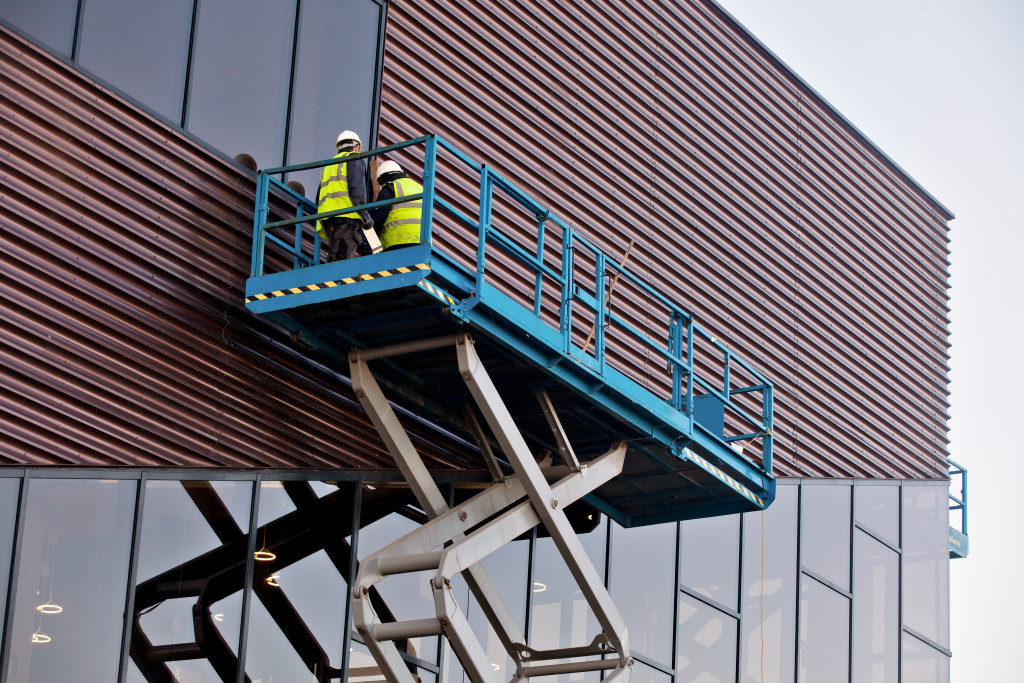Construction safety is a top priority for any business owner or entrepreneur overseeing a construction project. No one wants to be responsible for an on-the-job injury or worse. But accidents happen, even in the best-run construction projects. And according to the Bureau of Labor Statistics, about one in five workplace deaths happen.
That’s why it’s essential to know the most common hazards and how to avoid them. This blog post will discuss four of the most common construction safety hazards and what you can do to mitigate them.
Fire Hazards
Construction sites contain flammable materials like wood, gasoline, and chemicals. Plus, there are often open flames from welding and cutting torches. So, having a fire safety plan in place is crucial as ensuring all your workers are well-trained in fire safety procedures.
Some standard fire safety measures include using fire-resistant materials, storing flammable materials properly, and having fire extinguishers readily available. Investing in fire-proof clothing, such as fire-retardant boots and jackets, can also help protect your workers. If you work with combustible materials, ensure all your workers are aware of safely using the material and always have an emergency response plan.
By being proactive and taking the necessary steps to prevent a fire, you can help keep everyone on site safe. Thus, fire hazards should never be taken lightly in a construction setting.
Chemical Exposure
Construction workers are often exposed to harmful chemicals, either through contact with hazardous materials or by breathing in fumes from chemicals like paint strippers and solvents.
To protect your workers from chemical exposure, ensure they wear the proper Personal Protective Equipment (PPE), such as gloves, eye protection, and respirators. You should also provide adequate ventilation in areas where workers are using chemicals. Finally, ensure you have a plan for dealing with spills and leaks.
There are also regulations to protect workers from exposure to chemicals, such as the Hazard Communication Standard (HCS). Make sure you familiarize yourself with these regulations and follow them to ensure the safety of your workers. In doing so, you can help reduce the risk of chemical exposure on your construction site.
Falls
Falls are one of the most common causes of construction site injuries, but they are also one of the easiest to prevent. Some simple fall prevention measures include using scaffolding and ladders safely, keeping floors clean and dry, and using guardrails around open edges.
If your project involves working in high places, a platform lift may be a good investment. This equipment can help reduce the risk of falls by providing workers with a safe and stable platform. You should also ensure your workers have received proper fall protection measures before starting work on your construction site.
Implementing these simple fall prevention measures can help keep your workers safe and reduce the risk of accidents. As a result, you can help ensure the success of your project.

Heavy Machinery
Working with heavy machinery, such as forklifts and cranes, can be dangerous. That’s why it’s essential to ensure that all your workers are properly trained in the use of any machinery they are operating.
Licenses and certifications are an important part of any heavy machinery operator’s training. Ensure your workers have the necessary credentials and understand all safety procedures before operating any machinery. Handling heavy machinery without adequate training and safety procedures can lead to serious accidents.
Additionally, all heavy machinery should be inspected regularly and kept in good working order. This will help reduce the risk of operating malfunctioning machinery and ensure your workers are safe.
Lifting And Rigging
Lifting heavy objects is one of the most common tasks on a construction site. And while lifting can be dangerous if not done correctly, there are some simple steps you can take to help prevent injuries.
First, always use proper lifting techniques when lifting heavy objects. Use mechanical aids like lifts and cranes to reduce the strain on workers’ bodies. You can also use straps or other restraints to secure the load and prevent it from slipping or falling. Then, ensure workers have received proper rigging training before attempting any lifting tasks on your construction site.
Taking these steps can help reduce the risk of accidents and keep your workers safe while they lift and rig heavy objects.
By following these safety tips, you can help ensure a successful construction project and protect your workers from harm. Remember that safety should always be a priority on any construction site, no matter how small or large the project may be. With proper planning and implementation, you can create a safe and secure environment for all those involved.
